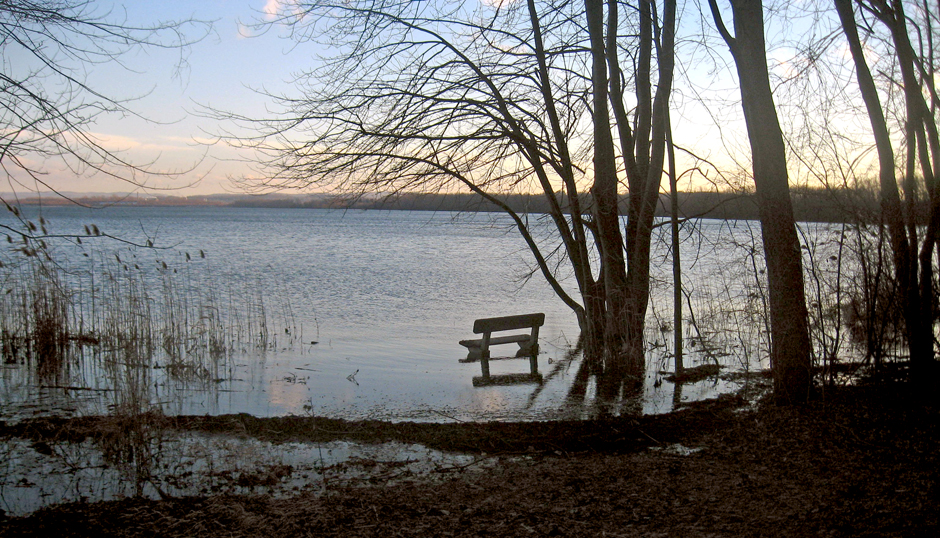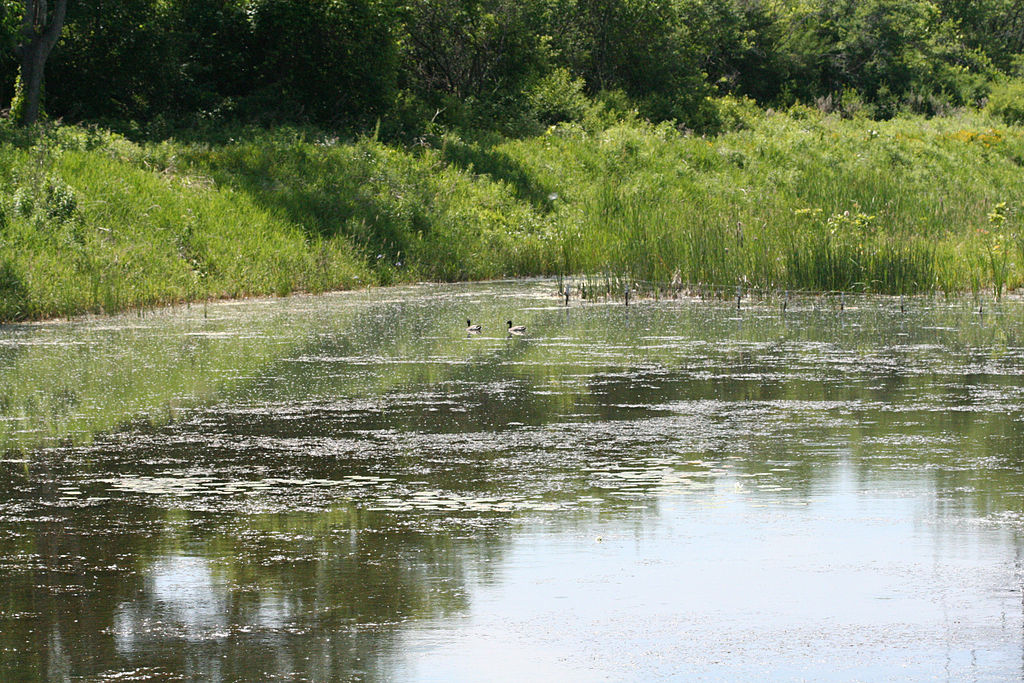A History of Harm to Onondaga Lake
 Flooded bench on the shore of Onondaga Lake in Syracuse, NY (Credit: Hotshotfox, Public domain, via Wikimedia Commons)
Flooded bench on the shore of Onondaga Lake in Syracuse, NY (Credit: Hotshotfox, Public domain, via Wikimedia Commons)Located in Central New York, the 4.5-mile-long Onondaga Lake has been a hotbed for pollution and mercury poisoning. Even though mercury levels have been steadily declining for several decades, levels are still too high for some groups to eat fish caught in the lake. In particular, sports fish have been cautioned against as they live in the polluted water and eat smaller fish that are also exposed to mercury and other toxic materials.
Aside from its local fishing draw, the lake is culturally significant to native groups surrounding the area. According to the Onondaga Nation, centuries ago, the Haudenosaunee Confederacy was created next to the lake, forging the first representative democracy in the West. The lake has historically been sacred land to members of the Haudenosaunee Confederacy: the Seneca, Cayuga, Onondaga, Oneida, and Mohawk Nations.
Mercury and More
Mercury is not the only problem present in the lake. Due to poor waste management earlier on, the lake saw a significant increase in ammonia and phosphorus, which spiked algal blooms. Algal blooms in lake environments can hinder dissolved oxygen production, and cold-water fish cannot survive.
Mercury is only part of the list of toxins found in Onondaga Lake. Mercury, chlorinated benzenes, BTEX compounds (benzene, toluene, ethylbenzene and xylene), PCBs (Polychlorinated biphenyl), and PAHs (polycyclic aromatic hydrocarbon) are all found in the lake. These chemicals impact land and aquatic life as the lake should be a source of life.
Fortunately, Metro- Onondaga County’s sewage treatment plant- has improved its waste management plan to limit the waste emptied into the lake. Metro’s efforts have been particularly impactful in preventing harmful algal blooms on the lake. Fish populations have seen an increase as a result of Metro’s new waste management plan.

Geddes Brook Wetlands, which was restored as part of the Onondaga Lake Cleanup (Credit: R. A. Nonenmacher, C.C. 4.0)
A History of Harm to Onondaga Lake
According to Syracuse.com, Allied Chemical discharged about 165,000 lbs of mercury into Onondaga Lake between 1946 and 1970. The damage of such dumps are still felt today as local wildlife and humans suffer. The Onondaga Nation reports that scientists have theorized that 7 million cubic yards of lake-bottom sediments are contaminated due to Allied Chemical’s earlier actions.
With support for cleanup coming from all sides, the state created a $451 million project to begin cleanup on the lake. The first step was dredging the bottom of the lake as the theorized toxic sediment will continue to dampen future efforts if unchecked.
Dredging was completed in 2014 and was followed by a sediment cap that was finished in 2016, reported the Onondaga Lake Cleanup website. Cleanup efforts were led by Honeywell International, the successor of Allied Chemical, after several rounds of negotiations between Honeywell and New York’s Department of Environmental Conservation.
Credit to Past, Present and Future Efforts
It seems that the cleanup efforts have been successful. Between 2009 and 2016, mercury levels in fish from Onondaga fell 70%. It is no coincidence that this drop occurred over the same period that Honeywell International was implementing its cleanup plan.
Fortunately, as other toxin levels have fallen alongside mercury—the lake becomes more hospitable as time allows the lake to heal. Efforts to save the lake have shifted toward long-lasting restoration rather than temporary solutions. The New York State Department of Environmental Conservation, Onondaga Lake Conservation Corps, and the U.S. Environmental Protection Agency continue restoration work today.
The ultimate goal of the restoration plan is to make the lake healthy again. Locals and administrative stakeholders hope that Onondaga Lake will someday be safe, hospitable and buzzing with life once again. Only time will tell if the lake will be able to make a full recovery.

Onondaga Lake, NY (Credit: Stephen Ransom Photography, C.C. 2.0)



Pingback: Environmental Monitor | Monitoring Water Pollution in Keweenaw Bay
Pingback: FishSens Magazine | Fishing in Onondaga Lake - FishSens Magazine
Pingback: FishSens Magazine | Mining Runoff Introduces Mercury to Aquatic Ecosystems - FishSens Magazine
Pingback: FishSens Magazine | Restoring Buffalo Reef in Lake Michigan - FishSens Magazine
Pingback: FishSens Magazine | Study: Lake Dredging and Other Ecological Harms - FishSens Magazine
Pingback: FishSens Magazine | Plastic to the Core: Invasion of the World's Oceans - FishSens Magazine
Pingback: Research Brief: Restoring Onondaga Lake through Reform - Lake Scientist